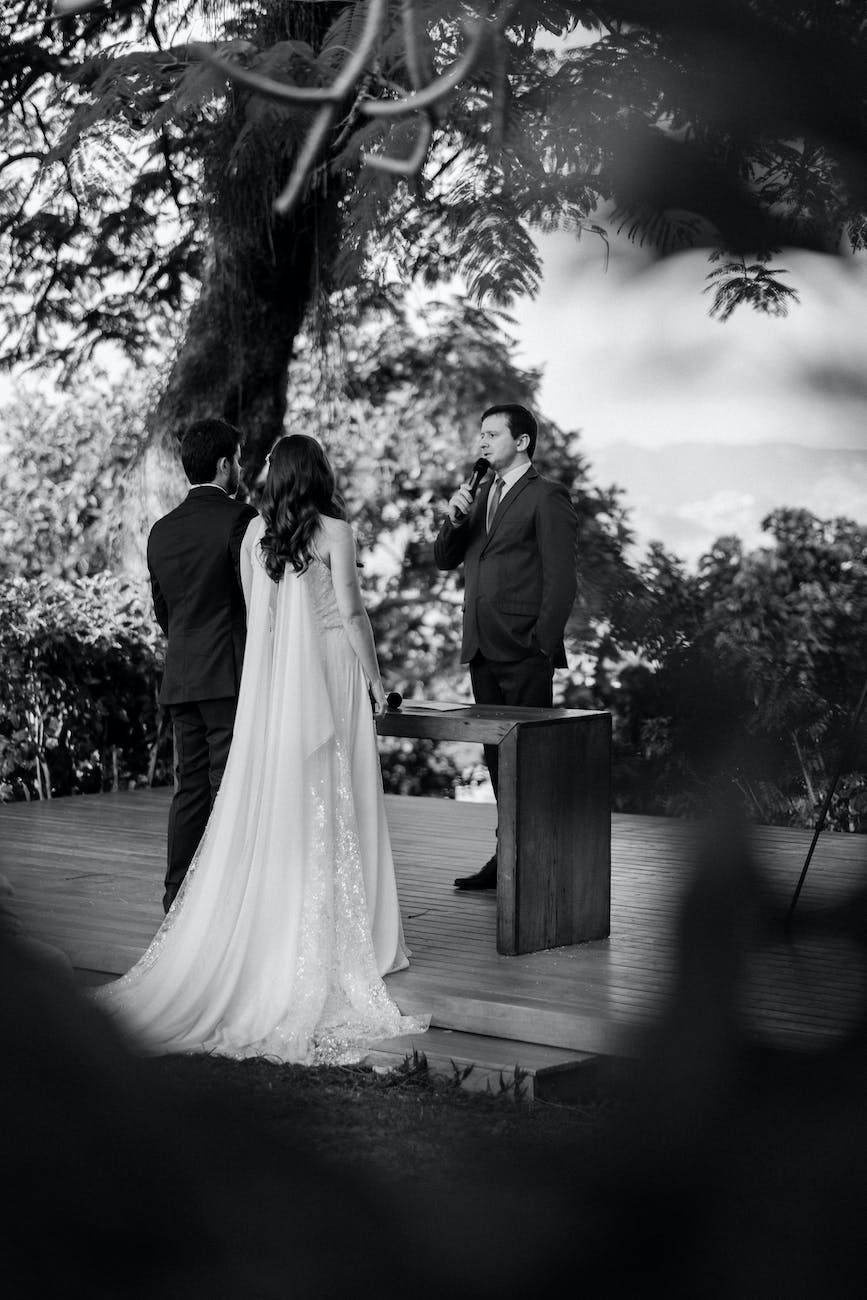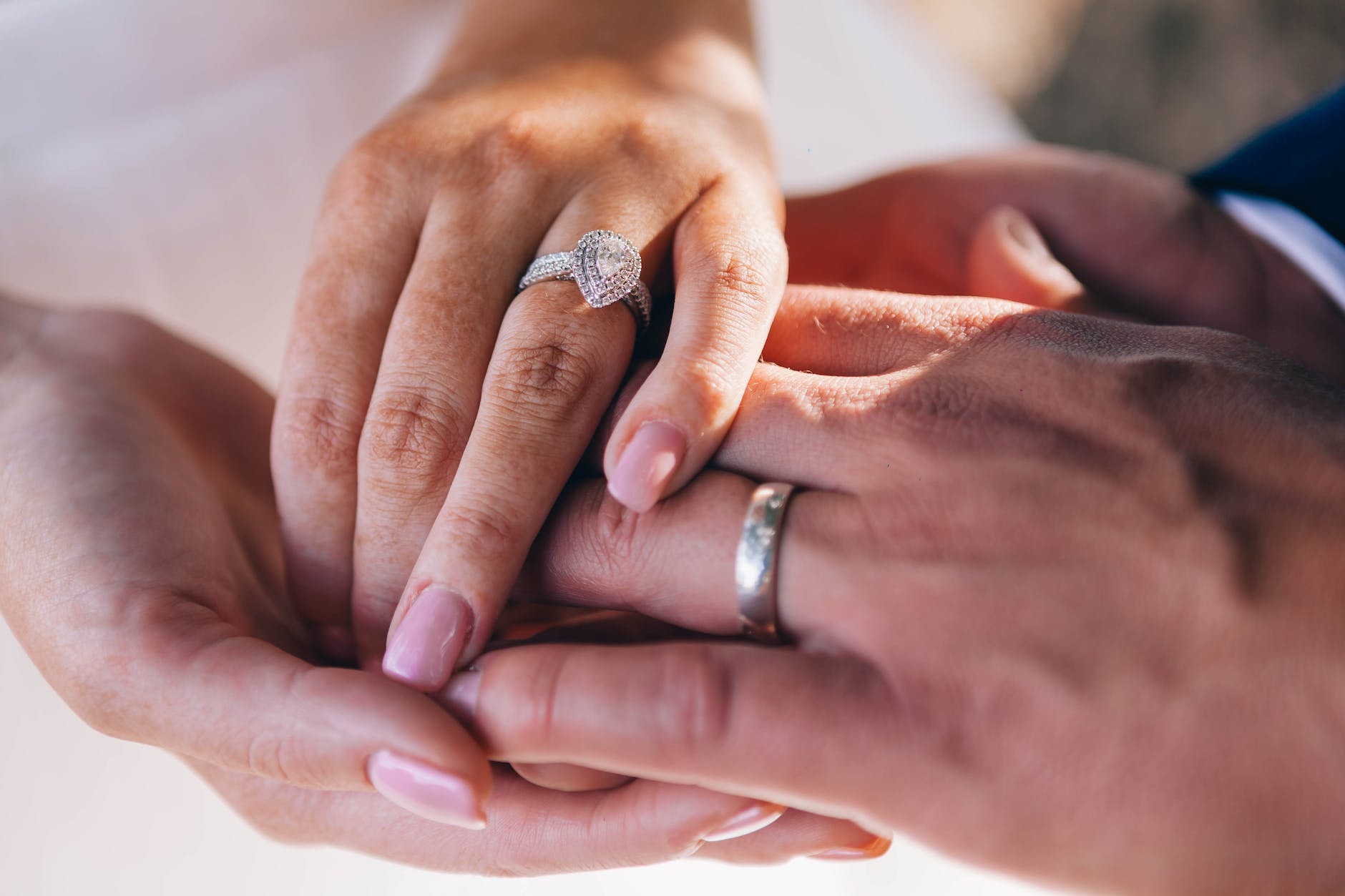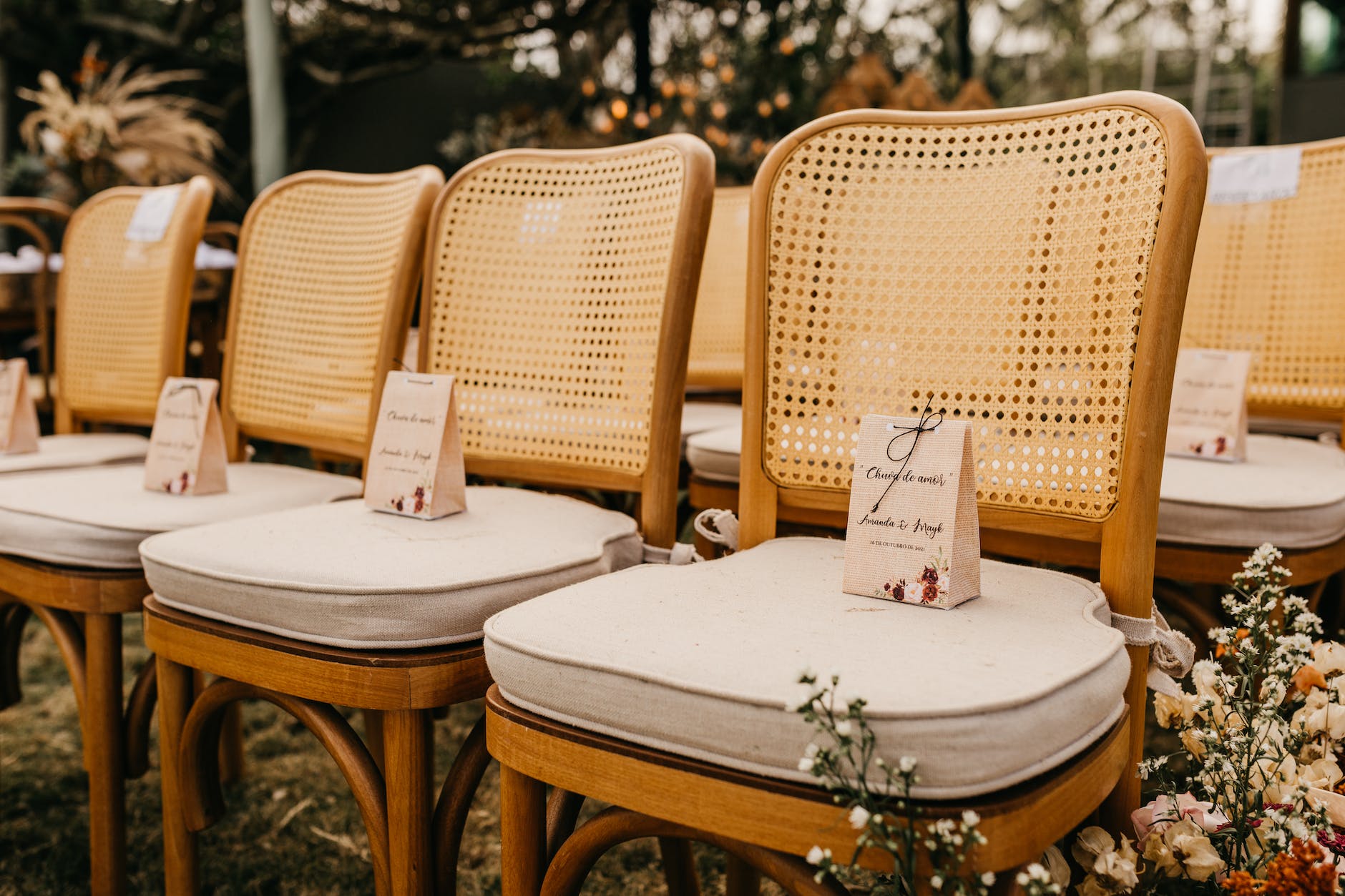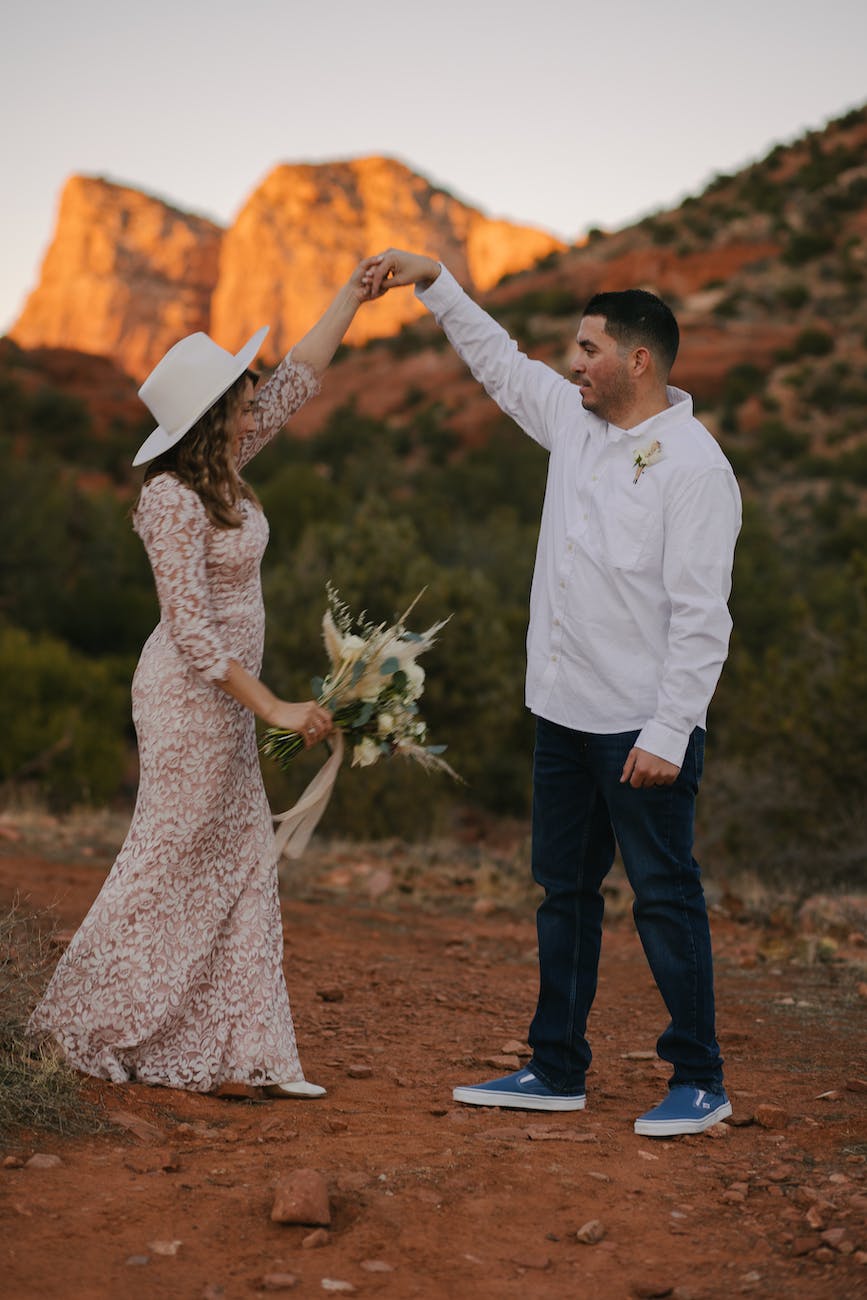When the bridal party gets to the first rows of seats, they can form one of two alternate arrangements:
The ushers all turn right to form a diagonal line behind the groom and best man. The bridesmaids do the same thing on the left side.
Each pair of attendants separates going to each side placing a groomsman and bridesmaid beside each other. Children may stand through the ceremony or be seated in the second or third row.
In the Protestant service, when the bride reaches the altar where the groom is waiting, the bride leaves the father’s arm and takes one step forward. The groom steps forward and stands to the bride’s right. The bride’s father remains standing behind her until the minister asks, “Who gives this woman to be married?” The bride is given away because historically she was looked on as property. Her parents arranged her marriage, and she was literally given to the groom. Today, the father walks his daughter to the altar and gives her in marriage as a sign of his approval of the union.
In most ceremonies, the father returns to his seat by the bride’s mother as soon as he gives her away. In the Jewish ceremony, all parents may remain standing throughout.
If the bride is required to kneel or climb steps during the ceremony, the groom usually takes her arm and helps her up and down. When the ceremony is over and the Marriage Officiant has congratulated the bride, the bride’s face veil (if she has one) is lifted by the groom. The traditional kiss may follow, or the bride may turn to face her guests. The maid of honor puts the bride’s bouquet in the bride’s right hand and can arrange her train in preparation for the recessional.
Wedding Alter Setup
text
The following are the procedures for setting up a wedding altar at the venue:
- Choose a location that is suitable for the size and style of the altar. The location should be visible to all the guests and have enough space for the officiant, the couple, and any other participants.
- Decide on the type and design of the altar. You can use a pre-made altar, such as an arch, a gazebo, or a canopy, or you can create your own using materials such as flowers, fabric, candles, or wood. The altar should match the theme and color scheme of the wedding.
- Gather the necessary tools and equipment for assembling the altar. You may need items such as scissors, tape, wire, glue, nails, hammer, ladder, etc. depending on the complexity of the altar.
- Follow the instructions for setting up the altar according to the manufacturer or your own plan. Make sure to secure the altar firmly to avoid any accidents or damages. You may need to enlist some help from other people to lift or hold the altar parts.
- Decorate the altar with additional elements, such as ribbons, banners, signs, photos, etc. You can also add some lighting effects, such as fairy lights, lanterns, or candles, to create a romantic ambiance. Make sure to test the lighting before the ceremony.
- Clean up the area around the altar and remove any debris or clutter. You may also want to cover the ground with a carpet, a rug, or some petals to enhance the appearance of the altar.
- Check the final result and make any adjustments or corrections as needed. You may want to take some photos of the altar to see how it looks from different angles and distances.
#WeddingPlanning #WeddingDirectory #WeddingTips #Weddings #unitytheweddingdirectory #unity #weddingdirectory #weddingplanner #weddinginspiration #weddingideas #weddingalter #weddingaltersetup



